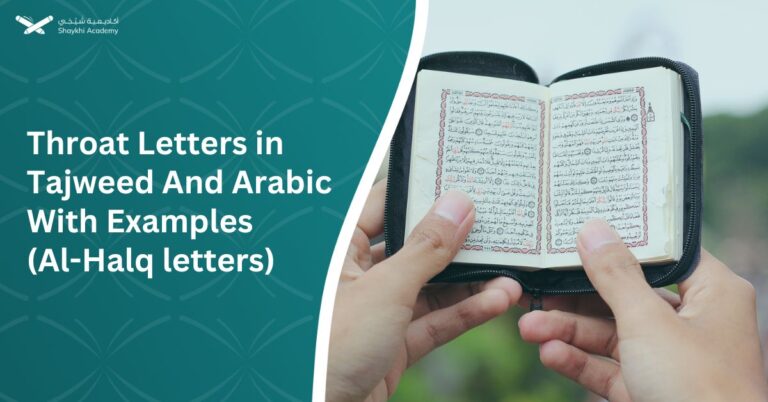
Throat letters In Tajweed And Arabic With Examples – Al-Halq letters
Throat letters, or Al-Huruf Al-Halqiyah (الحروف الحلقية), are the six Arabic letters (ع, هـ, خ, ح, غ, أ) that are

Throat letters, or Al-Huruf Al-Halqiyah (الحروف الحلقية), are the six Arabic letters (ع, هـ, خ, ح, غ, أ) that are
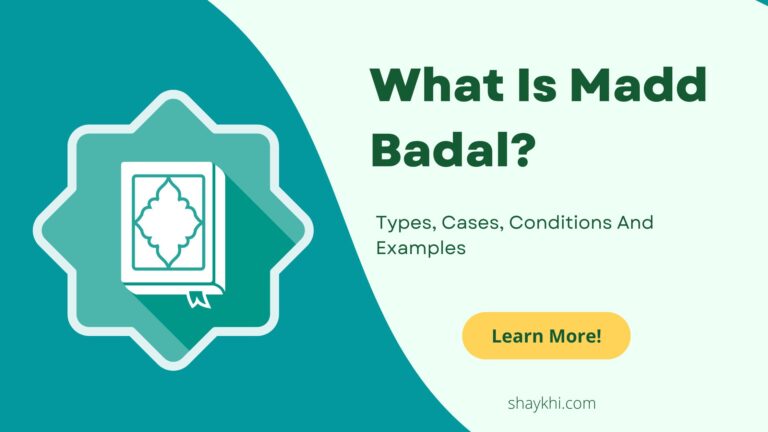
Madd Badal is a Tajweed rule where elongation occurs when a hamzah (glottal stop) precedes a Madd letter (alif, waw,
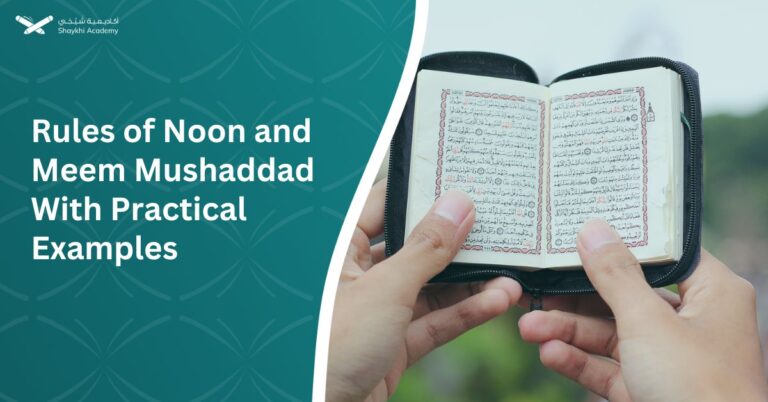
In Tajweed, Noon and Meem Mushaddad are critical rules marked by a shaddah (ّ), which indicates the doubling of these
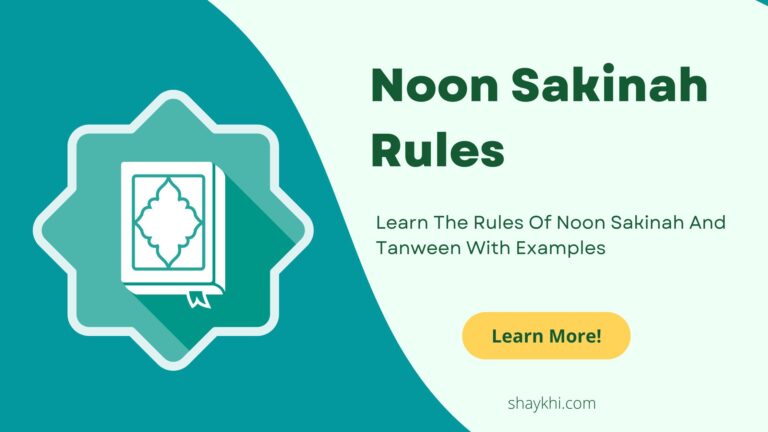
Noon Sakinah and Tanween have four main rules: Izhar, Iqlab, Idgham, and Ikhfa. Saakin, indicating no vowel sound, is crucial
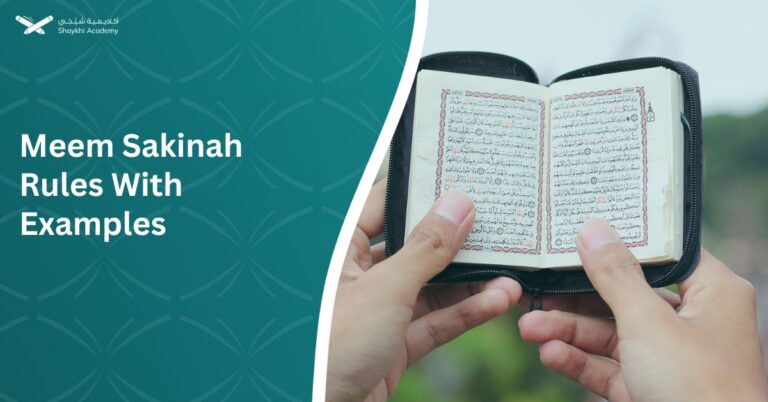
In Tajweed, Meem Sakinah, a vowelless Meem, follows three main rules: Izhar Shafawi for clear pronunciation except before Meem and
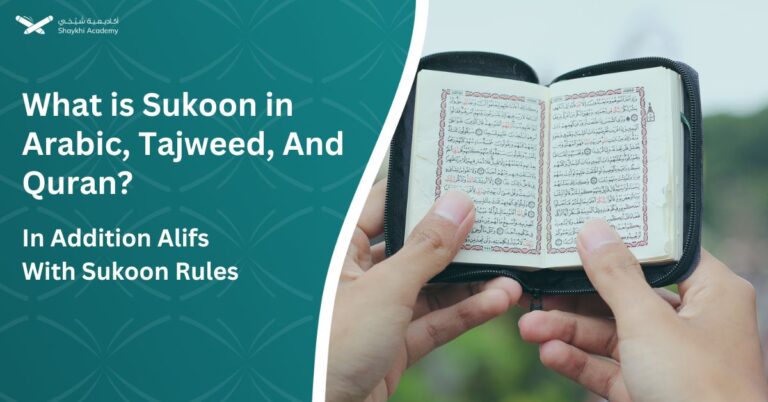
In Arabic grammar, Sukoon (ْ) denotes the absence of a vowel on a letter, aiding in pronunciation and grammatical clarity.
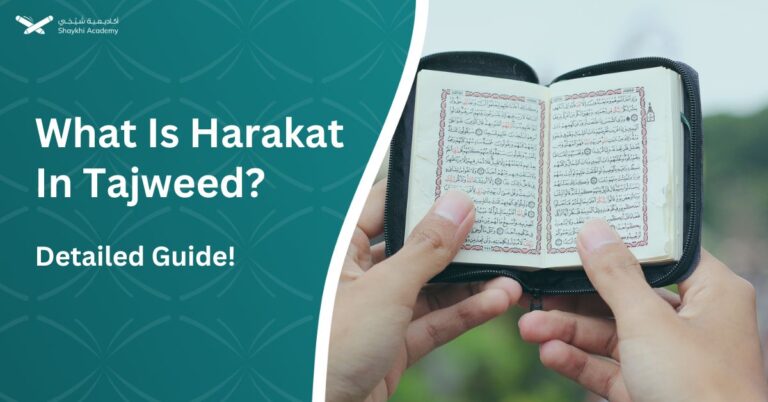
Harakat in Tajweed refers to diacritical markings used to represent vowels in Arabic text, aiding correct pronunciation and recitation of
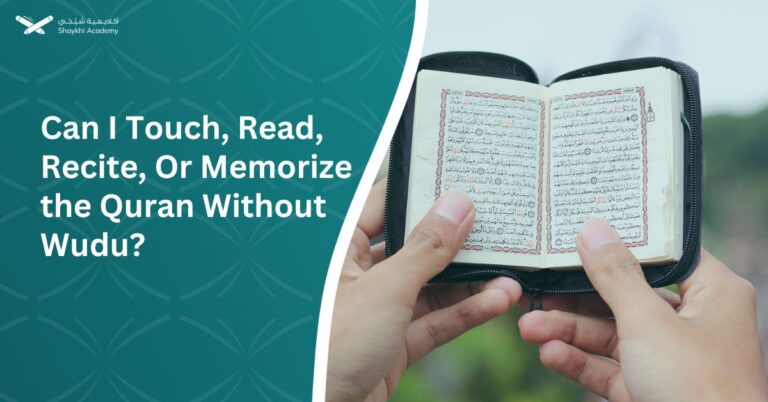
Can I Read, Recite and Memorize the Quran Without Wudu? Engaging with the Quran is a fundamental part of a
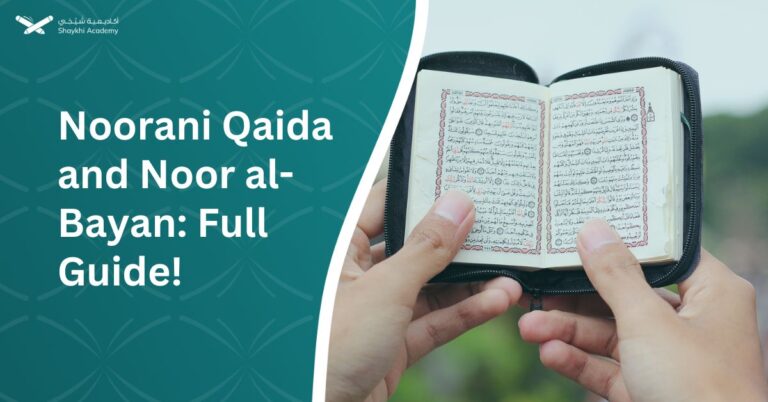
Noorani Qaida lays the foundation for Quranic eloquence through structured recitation, guided by gestures and practical exercises. Meanwhile, Noor Al-Bayan
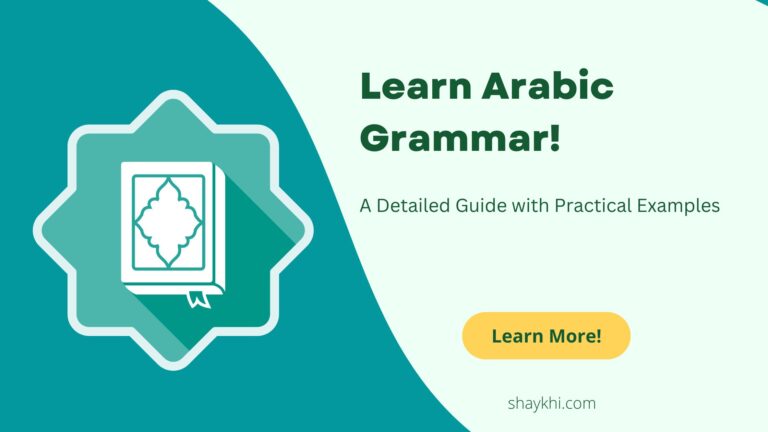
Do you want to learn Arabic grammar? Learning Arabic grammar involves understanding key rules like the classification of words into
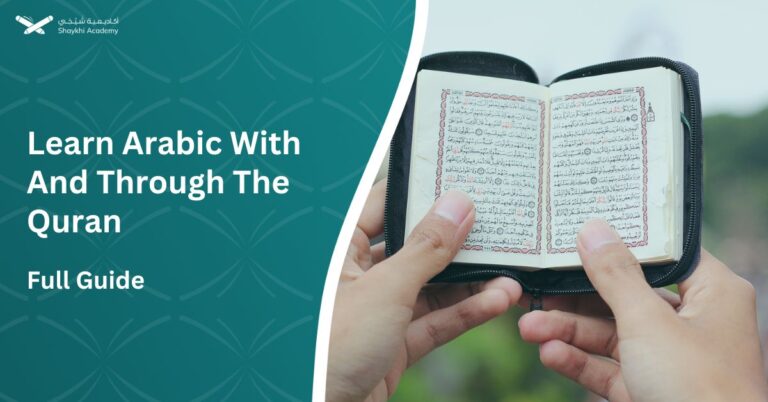
Learning Arabic through the Quran immerses you in the rich and intricate language of the divine message, offering a unique
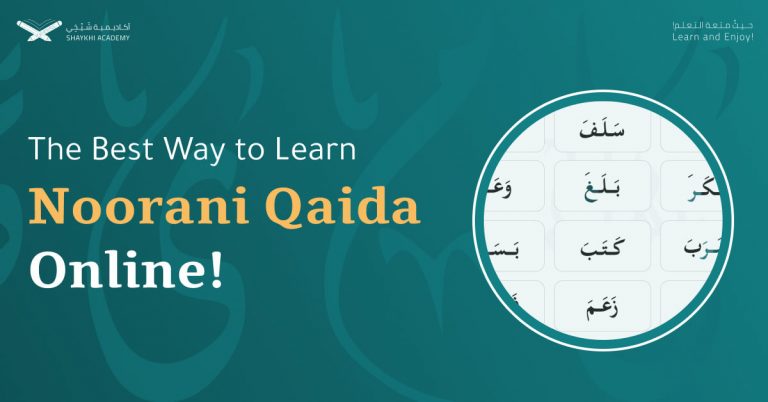
Arabic Noorani Qaida is a method of teaching Arabic reading and writing that aims at facilitating learning the Quran. It